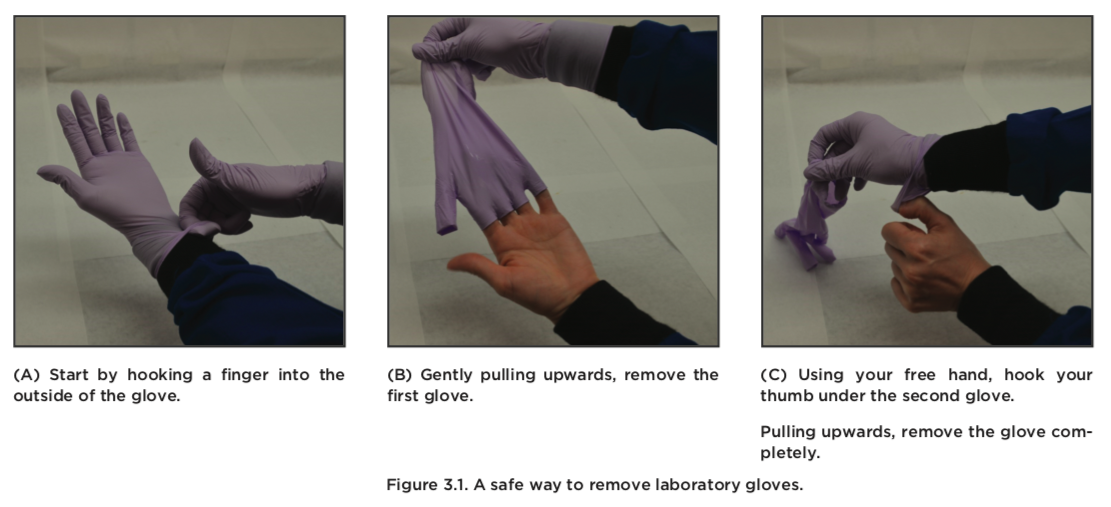3.1: GLOVES - THE GOOD, THE BAD AND THE UGLY
- Page ID
- 135949
When you start to think about ways to handle chemicals to ensure your safety, you likely think about wearing gloves to minimize contact between your skin and the chemical. Let us get one thing straight im- mediately: the gloves10 may offer only limited protection. This is an important fact because a common misconception is that the gloves you find in lab effectively protect the skin from solvents and other substances handled. This is simply not true.
To give you one example, the nitrile gloves that are typically made available are easily penetrated, and eventually broken down, by two common (and hazardous) solvents, acetone and dichloromethane.
There are several excellent online resources to find information about the permeability of various solvents and reactants.11
10 The most commonly employed gloves in many teaching labs, are nitrile gloves. There are many different gloves, in general the more cumbersome they are to wear, the better protection they offer. Unfortunately, there are no gloves on the market that are both practical and offer protection against most organic chemicals encountered in undergraduate organic chemistry labs.
11 Ansell has a very good overview. www.ansellpro.com/download/A...esistanceGuide. pdf
Another reason we wish to alert you to the limitations of lab gloves, is that wearing them can provide a false sense of security, and this can be very dangerous. Imagine you are wearing gloves, First, you now think that they are protecting you. You are perfectly safe. As a result, you might be less careful, or you may pay less attention to the risks involved in tyour experiment. Not only that, once you put on gloves, you probably pay little attention to how you handle the gloves themselves, what we call “glove hygiene”.
Common examples of poor glove hygiene (things you must always avoid) include: touching (and contaminating) your face, skin, hair, or clothes with your gloves, touching (and contaminating) objects like phones, pens, and notebooks, that you will use outside the lab, failing to check gloves periodically for leaks and cracks, and failing to remove gloves each time you leave the lab
In general, gloves should only be worn for short periods of time, and exchanged routinely, especially whenever a chemical has been in contact with them. The contaminated exterior of the gloves should never come in contact with your skin. Whenever you are done with your gloves, you should remove them in a safe manner and wash your hands (never use bare hands to remove gloves).



